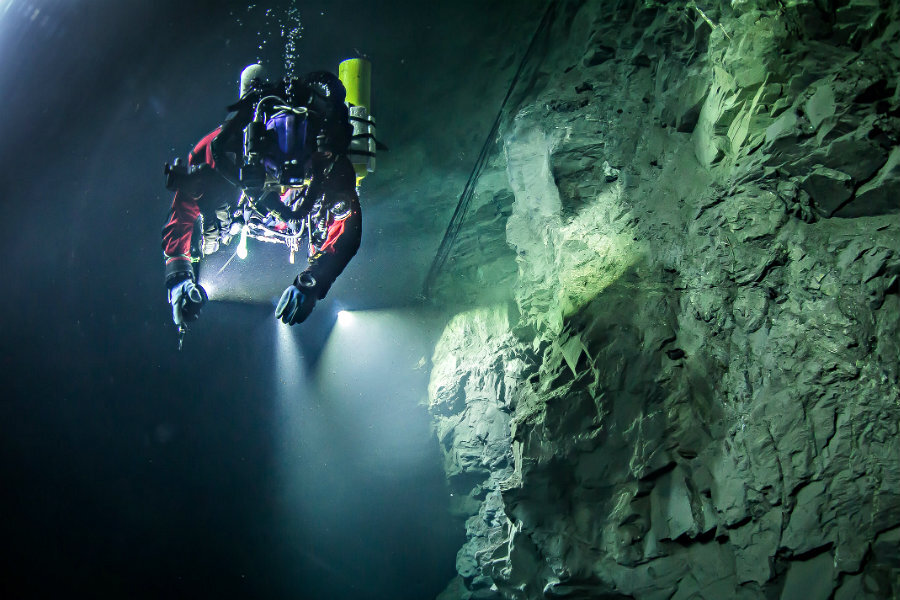Czech Republic home to world's deepest known underwater cave
Loading...
Explorers knew that the Czech Republic cave called Hranická Propast was deep. But until a team of spelunkers led by Krzysztof Starnawski delved deeper, nobody knew just how deep it was.
The team determined on Tuesday that Hranicka Propast was 1,325 feet deep, the deepest cave on Earth yet discovered. The previous record holder, a cave in Italy called Pozzo del Merro, was measured at a mere 1,286 feet deep.
To aid in their discovery, the team used a remote operated vehicle (or ROV) to plumb the cave’s darkest depths. Yet while explorers and researchers are increasingly finding ways to use technology for exploration, Mr. Starnawski says that robots don’t diminish the role humans play in discoveries like Hranicka Propast, but rather that they amplify it.
“Robots do not do the job instead of us. We, the humans, are still needed to show them where to go,” Starnawski told National Geographic, who partly financed the mission.
Divers have explored this particular cave for years - Starnawski himself has been diving there since 1999. Spelunkers say that the abyss is interesting to explore because of the unique method in which it was formed.
“This cave is very unique because it’s like a volcano, formed from hot mineral water bubbling from the bottom up, rather than rain coming from the top down like most caves,” Starnawski told National Geographic last year, when the team announced the cave’s potential depth.
“There are probably only three caves like this in the world. There is nothing typical about this cave, and every dive we make new discoveries.”
As a result, the cave includes tight bottlenecks, jammed with tree trunks and rock debris. Starnawski dove through one, located about 200 meters (656 feet), into the abyss beyond once in 2014. He was forced to spend six hours in a decompression chamber in order to recover from that dive.
After that, the team brought in the robots.
“My intention was not to achieve the deepest dive by a human, but to assist the exploration by the ROV. In this cave we wanted to explore beyond the 400-meter limit. It can't be done, so far, by a scuba diver in the cave,” Starnawski said.
The team obtained a robot from GRALmarine, and guided it down into Hranická Propast, to the depth of 1,325 feet where it ran out of rope. Starnawski plans to dive to the bottleneck, which the team calls “The Squeeze Passage,” TO retrieve the robot on Saturday.
Scientists are increasingly choosing to use robots to reach the depths of inner space (as well as outer space). In April, Stanford University researchers announced the development of a “robo-mermaid” with touch sensors that is able to delicately handle small objects, and allow underwater explorers to reach new deepwater shipwrecks and archeological sites.
What’s next for Starnawski?
The diver won’t stop seeking new depths, he told National Geographic last year.
“This cave is a big part of my life because I have been exploring it for 15 years, and it keeps going deeper. I want to show people that this is the deepest underwater cave. If I succeed, I will be fulfilled for a few minutes…then I will need to find a new project.”








